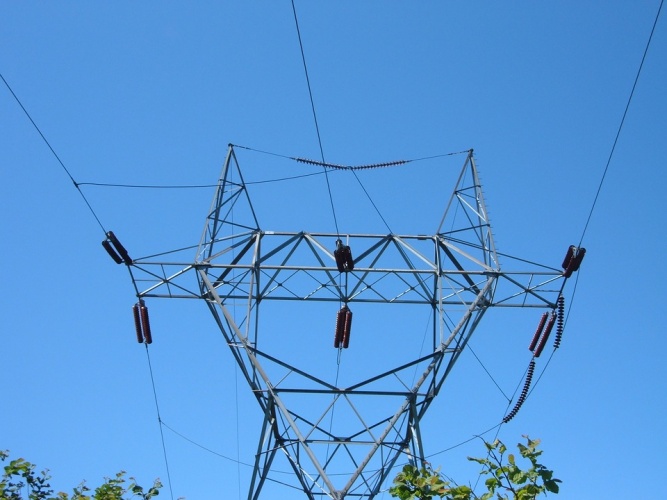 Andrew Wade, senior reporter
Andrew Wade, senior reporter
Whenever we write about renewables at The Engineer, there are inevitably voices decrying their intermittency. The sun does not always shine and the wind does not always blow, we are reminded.
Renewables have many benefits, but their intermittency does indeed carry a cost. That cost is something the UK Energy Research Centre (UKERC) has been examining, and a new report published this week looks at where those costs are and how they can be minimised.
The study is an update of a 2006 review on intermittency when renewable generation was expensive, but the costs of adding the flexibility to accommodate it was low. However, variable renewables made up just 3 per cent of the energy mix at the time, and the authors did not anticipate levels above 20 per cent, a figure which many countries are today exceeding.

“You’ve got (renewable) energy available to you which is potentially, a few years from now, the cheapest option that’s available to you,” said report co-author Dr Robert Gross, a senior lecturer in energy policy at Imperial College and a UKERC director. “The system costs then become the fundamental constraining factor, and it’s therefore extremely important that you make the system as flexible as possible.”
“We’ve certainly reached a point where it’s as important to be thinking about flexibility, as it is to be thinking about building new renewables capacity.”
According to Gross and lead-author Dr Phil Heptonstall, with the proper flexibility built into the grid, the costs of intermittency will be modest. Due to the complex nature of the grid and multiple overlapping costs, it is difficult to put an exact figure on it. Back in 2006, integration costs for wind and solar were estimated at around £5-£8 per megawatt hour (MWh). Inflation, combined with our increased reliance on renewables, means that cost has grown, but only marginally.
“If you wanted a very approximate ballpark for the UK you could say it was below £10, or of the order of £10 per MWh,” said Gross. “But, we being academics would be quite nervous about oversimplifying that because, as I’ve said, there are two categories of cost that don’t just add up. They don’t just add on to one another, they kind of overlap.”
That cost per MWh will jump dramatically if we continue to add more wind and solar into the energy mix, yet don’t embed more flexibility into the overall system to counteract intermittency. For example, if variable renewables were to account for 50 per cent of generation and the grid did not to evolve, additional costs could be as high as £45/MWh. How then, are we to ensure that a situation like that does not arise?
“If we are going to continue to make progress towards a decarbonised power system, then we have to actively plan to make a low-cost and optimised low-carbon power system,” Gross explained. “It won’t just happen by itself, and if you just provide subsidies for renewables, and don’t think about the configuration of the rest of the system, you could end up in a very sub-optimal and very expensive place.”
According to UKERC, there are a number of actions that can be taken to incentivise change, including allowing the wholesale price of energy to become more volatile, reflecting the current inflexibility in the system.
“On occasion (the energy price) will shoot up to £3,000 per MWh, and those price signals need to feed through, because they will offer a market-friendly incentive to companies to invest in flexible generation,” said Gross.

UKERC suggests allowing price signals to hit the market without a price cap and also bringing in a smarter, more specific capacity mechanism. Thirdly, the system operator can have a direct impact by tendering for more flexible generation capacity, something that has already happened in the UK.
“National Grid has created this new enhanced frequency response service, which asks for very, very quick changes in output,” Gross said. “And essentially the only technology that can deliver that is storage. So in a way, National Grid have deliberately set out to tender for storage, but they haven’t explicitly said that they’re tendering for storage.”
But storage alone is not the answer. It’s neither practical nor cost effective to meet those flexibility demands exclusively with storage systems, and it must work in combination with demand side response, more flexible generation and interconnection.
“What the UK suffers from is the fact that we are a relatively small island with a large population, so we’re meeting quite large demand swings,” explained Gross. “If we had more interconnection built into western Europe, that would help with this.”
“There were plans to build an interconnector put on ice because of Brexit, and that’s now going ahead. It’s sensible to build transmission capacity. It’s almost always sensible to build transmission capacity…copper wires are cheaper than power stations.”
With nuclear new-builds like Hinkley C hitting a strike price in excess of £90/MWh, the last thing the energy system needs is additional costs of £45/MWh due to inflexibility. UKERC is urging the government to act on all fronts to avoid such a mess.





Report highlights significant impact of manufacturing on UK economy
Note to Evil Villain/Dave 2020. Thatcher was PM for _11_ years, from 1979 to 1990 so no one under the age of 34 was even born when she left office....